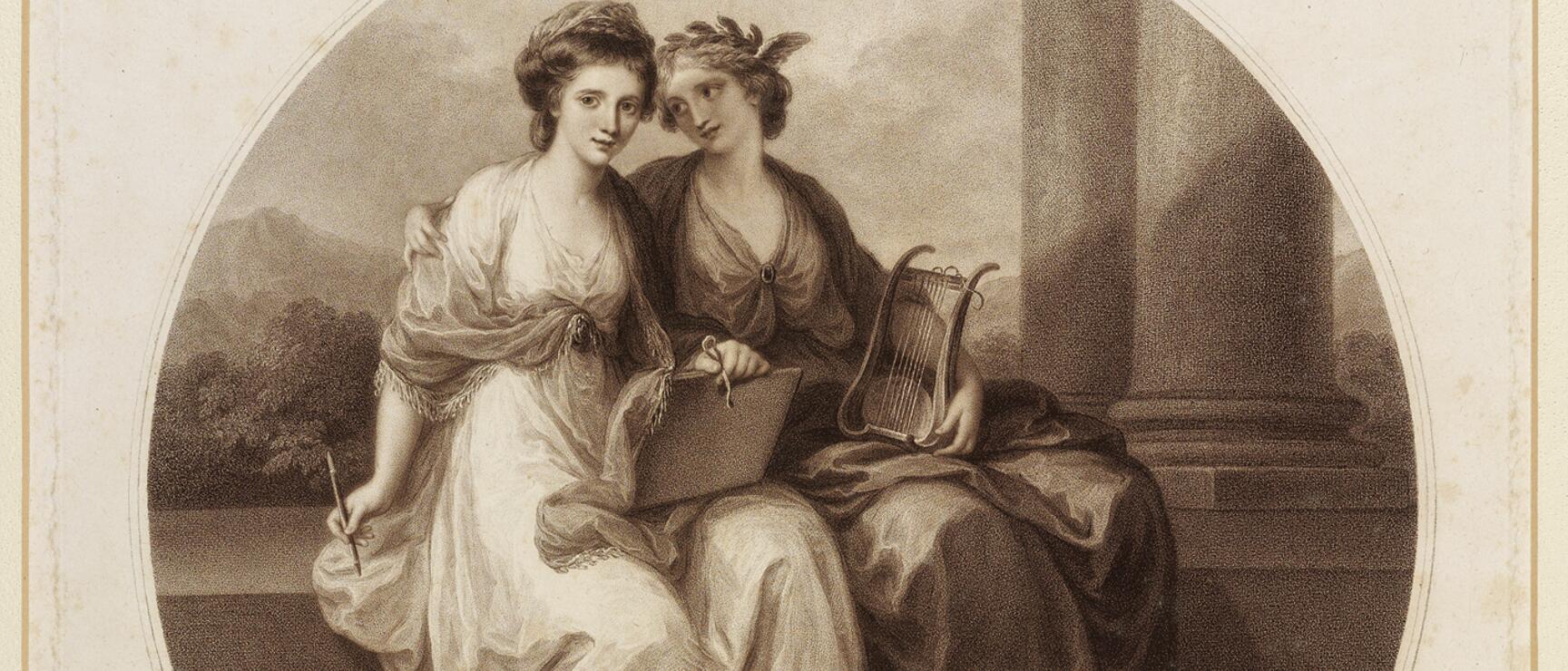
Angelika Kauffmann
In the footsteps of the artist
„The whole world is angelicamad!“
When the cosmopolitan and highly gifted painter Angelika Kauffmann opened her studio in London—after spending time in several of Italy’s leading art centres—she was only in her mid-twenties. And soon, the whole world was “angelicamad” – mad about Angelika.
Like Mozart’s musical father, Kauffmann’s painter father recognised his daughter’s talent early on and supported her in every way. By the age of 16, she was already painting wall frescoes in the church of Schwarzenberg in the Bregenzerwald, the village her father’s family came from and the place she considered her lifelong home.
The life of Angelika Kauffmann
Unconventional, married, broke
Kauffmann’s portraits, which perfectly matched the fashions of the time, were especially sought after. Anyone who was anyone sought out “Miss Angel” to have their portrait painted. This soon brought the artist considerable wealth and turned her studio—wherever she happened to be working—into a central meeting place for high society.
As cultured, well-connected, talented and glamorous as she was, she lacked experience in matters of love: in 1767, while in London, she fell victim to a marriage fraud. Just three months after the wedding, she was divorced and left without her money – more than enough material for a scandal.
The life of Angelika Kauffmann
A pioneer of her time
It was many years later that she entered into another marriage, this time with the much older painter Antonio Zucchi. Remarkably, he gave up his own career in favour of his wealthy and talented wife and instead managed hers.
Kauffmann remained committed to her artistic independence throughout her life. She turned down court appointments and preferred to take commissions from around the world — from tsars, emperors, the pope, wealthy citizens and banking families. She set her own prices and chose her subjects. She painted in Rome, London, Naples, Venice and Florence.
The life of Angelika Kauffmann
Merchandising with „Miss Angel“
Even if not everyone could afford originals, engravings of her paintings decorated nearly every modern household of the time. Well into the 19th century – and even into the 20th – motifs from Angelika Kauffmann’s works appeared on decorative plates and porcelain services.
This early form of merchandising had much to do with the fascination surrounding her remarkable persona. Even Goethe, whom she counted among her friends, admired her and described her as a “wonder woman.” When she died in Rome in 1807, she was buried there with pomp and ceremony.
The life of Angelika Kauffmann
From the Bregenzerwald to the world
In the 18th century, a trend emerged among young aristocrats and wealthy members of the bourgeoisie across Europe: the educational journey known as the “Grand Tour.” As a souvenir, many travellers brought home a portrait—and those who could afford it went to the best: Angelika Kauffmann. As a result, the Austrian artist sold her portraits around the world.
The Grand Tour also marked the beginning of tourism in the Alps. And today, anyone crossing the Alps in Austria and being moved by the beauty of nature is, in a way, also following in the footsteps of the painter and her contemporaries.
Key milestones in the life of Angelika Kauffmann
Experience her work
The Angelika Kauffmann Museum in Schwarzenberg
The Angelika Kauffmann Museum in Schwarzenberg offers an insight into the fascinating world of this important artist. Housed in the over 400-year-old Kleberhaus – a traditional farmhouse – the museum displays original paintings, drawings and textile works by Kauffmann. Visitors can see how this woman from Vorarlberg influenced art and fashion in the 18th century.
What makes it special: Despite using modern exhibition techniques, the historic character of the building has been preserved. The museum combines art, history and the culture of the Bregenzerwald into an impressive experience.